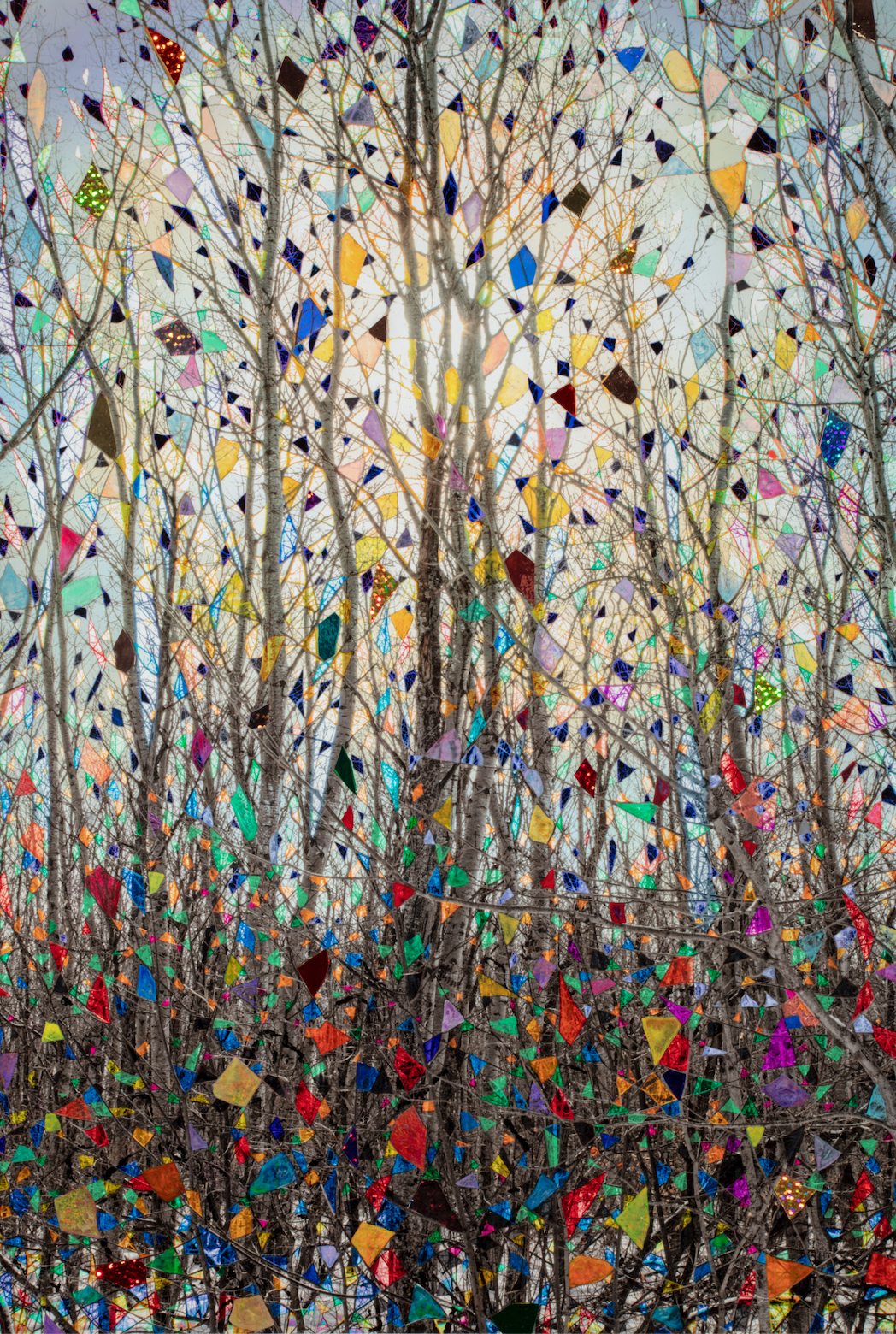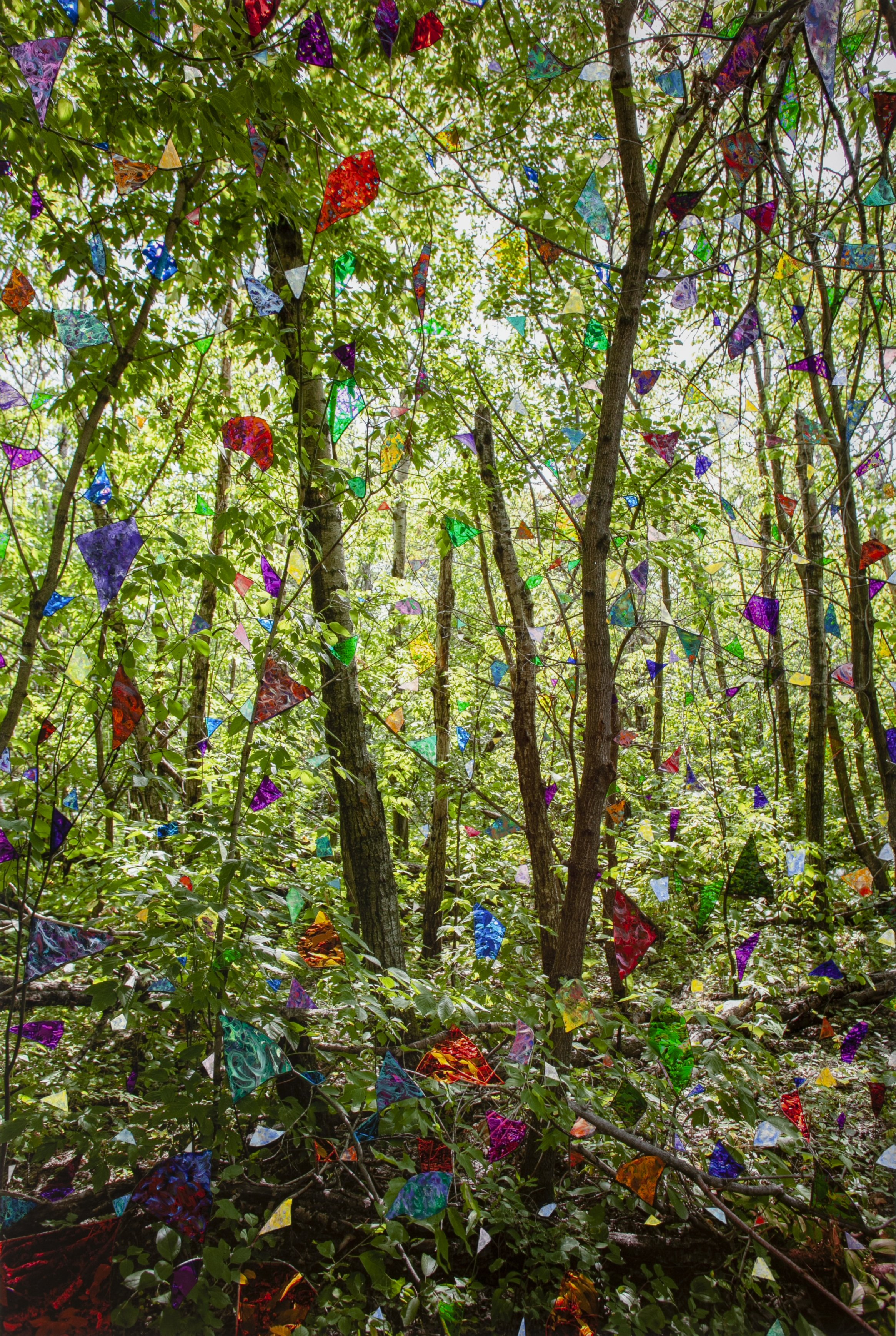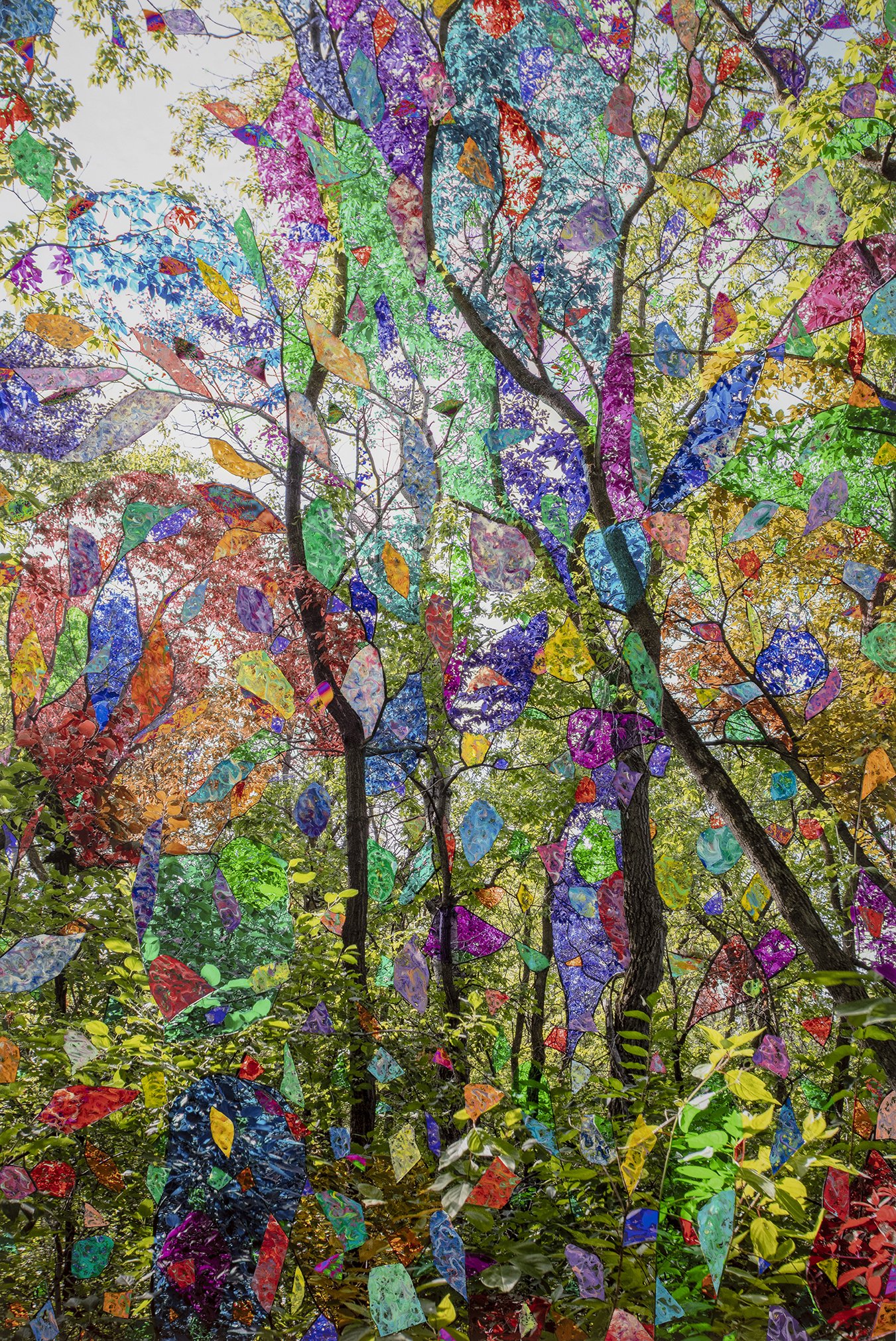
Woodlands
Sarah Anne Johnson
Volume Two, Issue Two, “Senses,” Visual Art
Sarah Anne Johnson makes artworks that, in her view, depict nature as “more truthful” than it appears to the naked eye. From traditional knowledge of the land passed down through generations of indigenous peoples to the influence of ancient trees on sacred architecture and modern scientific research testing the ability of trees to communicate intelligently, the artist draws inspiration from the transcendent yet invisible aspects of nature.
Johnson takes photographs in the forests of her native Manitoba. Working intuitively, the artist transforms her 60” x 40” pigment prints into active grounds for applying both fine art and unconventional materials, such as oil paint, gold or brass leaf, sparkly holographic stickers, and photo-spotting ink, across their surfaces. At times the photographs, enhanced by hand, are flecked by a radiant spray of painted dots and dashes. At others, small biomorphic shapes stenciled in acrylic paint seem to ooze from the image or flit magically in the air. On CDMC, thickly-applied, shiny patches of oil paint trace negative spaces between tree branches and simulate stained glass windows in houses of worship. Johnson’s added forms represent with paint and brush what the eye and camera cannot apprehend; not only communication between plants but, just as importantly, her personal experience of the landscape. “I do this to create a more honest image,” says Johnson. “To show not just what I saw, but how I feel about what I saw.”
In her expansive series, “Woodlands,” Winnipeg-based photographer Sarah Anne Johnson invites the viewer to reconsider representations of landscape, limitations of the photographic medium, and methods for the artist to intervene, creating more “truthful images.” As artists, collectors, and arts institutions increasingly venture into the digital realm, Johnson’s photographs remind us that digital or virtual renderings of the natural world are often incomplete, failing to replicate elements of the experience of entering spaces that are quite literally in constant flux.
Using oil paint, holographic stickers, and dyes, Johnson simultaneously deconstructs the image into discrete parts and constructs geometric patterns and shapes on the image surface. She is selective in the process however and rarely breaks apart the tree trunks, almost reaffirming their stability within the forest environment and the picture frame. In TFH2 (2021), Johnson outlines the trunks using vibrant shades of orange and yellow, further emphasizing their presence and architectural significance to the trees. The vertical, monotone tree trunks ground both tree and eye, complemented by the range of colors and textures offered by the leaves, branches, and kaleidoscopic shards of light. The glowing outlines and shapes mimic afterimages of our perception — the way lingering on bright light creates echoes of it as our eyes dart elsewhere. These shards act as traces of where the viewer's eye falls, picking up specific details in the landscape and lingering upon them momentarily.
Johnson’s use of prismatic color also brings to mind the physics of white light. To the camera and naked eye, white light is essentially colorless, but with paint and dye, Johnson carefully breaks down white light into its disparate parts or the individual color wavelengths that make up the visible spectrum of light. Considering how woodland creatures may perceive the forest in totally different fields of color, Johnson’s photographs seem to direct us away from typically anthropocentric perceptions of the natural world.
- The Editors






Sarah Anne Johnson was born in 1976 in Winnipeg, Manitoba. She received her BFA from the University of Manitoba and completed her MFA at The Yale School of Art. Johnson’s work has been exhibited in numerous solo and group exhibitions internationally. She is the recipient of numerous grants and awards and is included in several distinguished collections. Currently, she lives in Winnipeg. She is represented by Yossi Milo Gallery in New York, Stephen Bulger in Toronto, and Division Gallery in Montreal.






